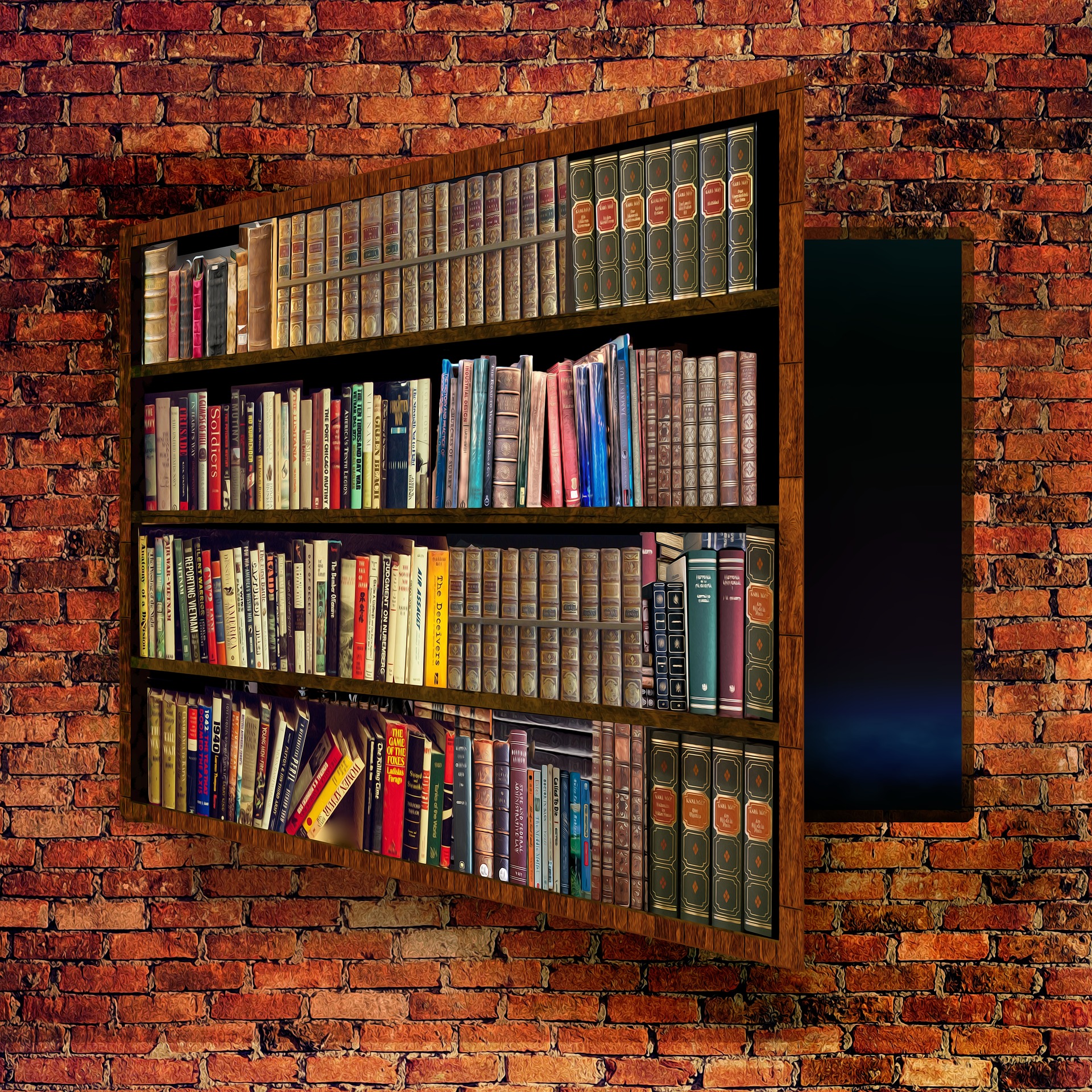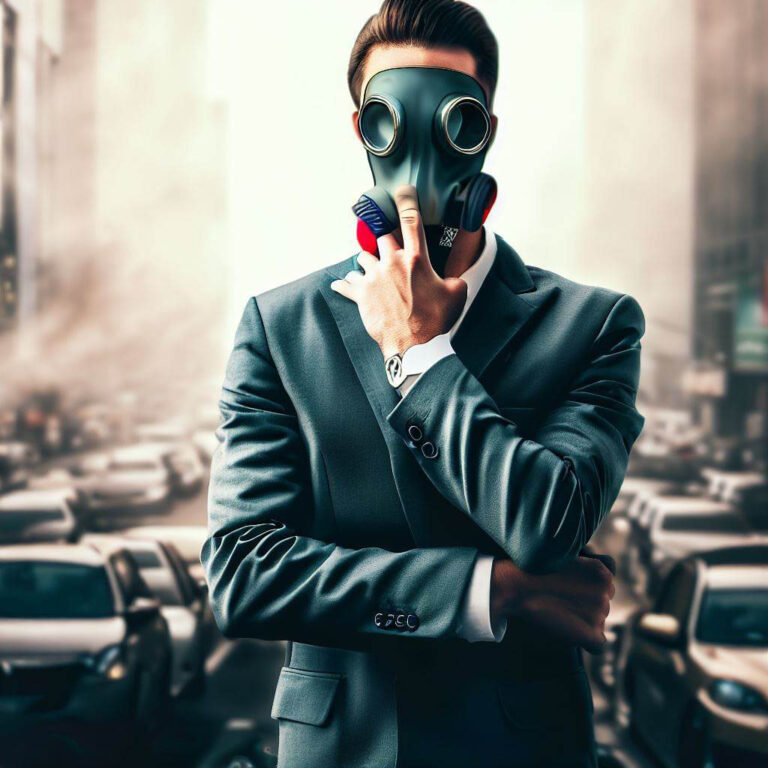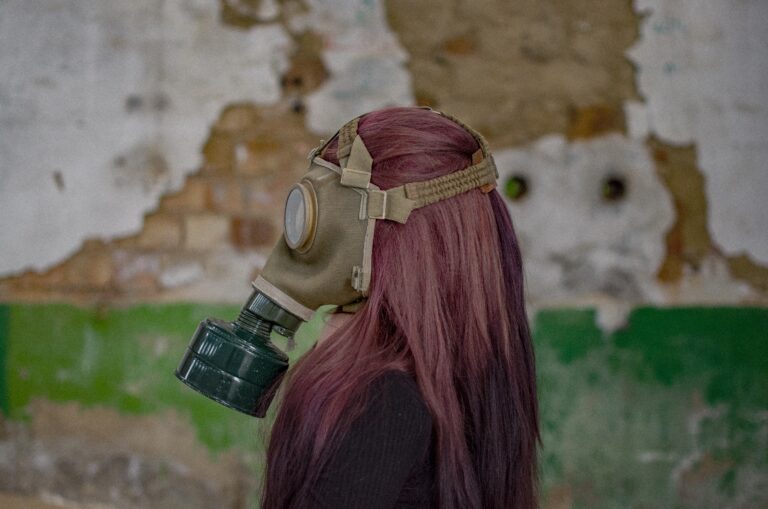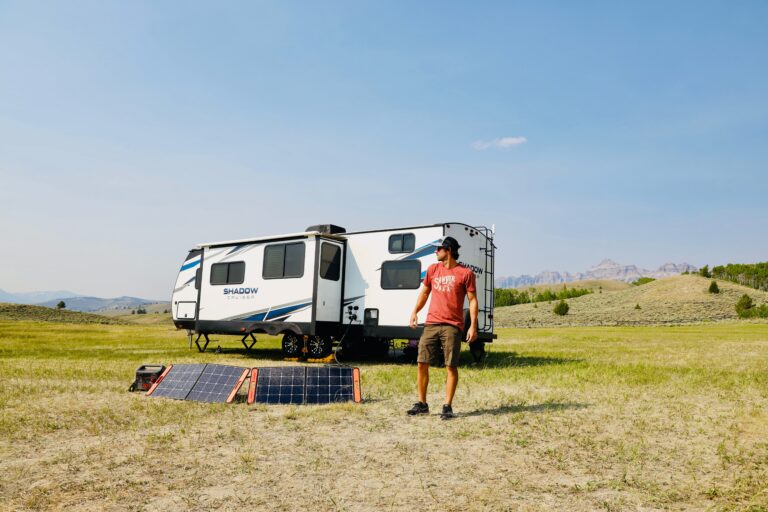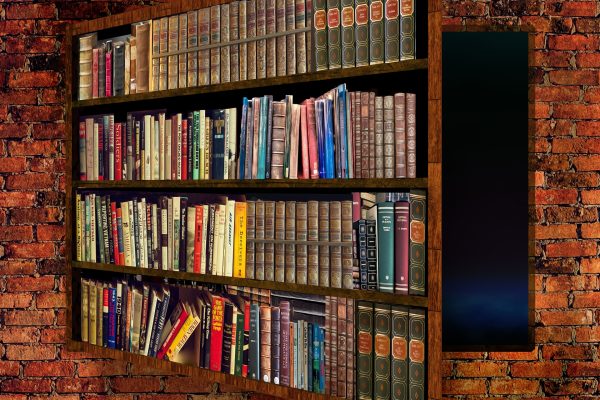
In the current state of affairs in the world with elements such as increases in economic uncertainty, civil unrest and even the fear of another world war, more and more families are looking into the pros and cons of adding a Safe Room or Panic Room to their existing home.
According to a study from the `Federal Alliance for Safe Rooms’ it was determined that that Safe Rooms increased the sale price of a home by 3.5% (on average $4,200) Apr 9, 2020.
Alluding to the various aspects above, individuals may be thinking about the benefits of having a Safe Room or Panic Room. There are various reasons one might justify this. Some of those reasons could be as follows:
- A second layer of protection for valuables and extra emergency cash.
- A place of retreat should there be a home invasion.
- A place that can double as a storm shelter.
- Last and not least, the `Cool Factor’. Have a secret safe room is just cool.
What Is the Difference between a Safe Room vs Panic Room?
The term Safe Room and Panic Room are often used interchangeably. However, if you drill down a little bit more a Panic Room is a designation used to define a structure that is specifically designed to protect against intelligent human invasion.
Essentially a Safe room is a well-fortified room that is installed commercially or residentially to provide either protective storm proof shelter, or hiding place / emergency fall back room during an home invasion thus Safe Rooms can double as Panic Rooms with specific construction additions.
What Defines a Safe Room?
A Safe Room is a room or structure specifically designed and constructed to resist wind pressures and wind-borne debris impacts during an extreme-wind event, like tornadoes and hurricanes, for the purpose of providing life-safety protection. 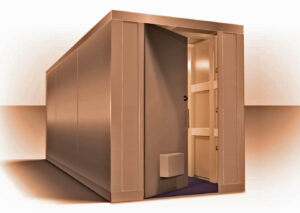
A tornado or hurricane can cause much greater wind and wind-borne debris loads on your house than those on which building code requirements are based. Only specially designed and constructed safe rooms, which are voluntarily built above the minimum code requirements, can protect you from these risks.
Where should a Safe Room be located?
Because when we discuss Safe Rooms, we are generally talking about protection from Hurricanes and Tornados Safe Rooms can be located on the interior or exterior of a home. The key things to make note of is that they are securely bolted to the ground per FEMA requirements and the manufacturer should go cover this with you.
Specific locations of safe rooms tend to be either in a centralized section of the home, in the garage or in the basement. If you live in an area that tends to have flooding on a frequent basis, we would strongly suggest NOT locating a Safe Room in the basement.
What Should You Expect to Spend?
For the average consumer a basic Safe Room that offers near absolute protection in a hurricane or tornado can be constructed and installed for between $3,000 – $7,000 on average. Adding materials like bullet resistant Kevlar, dedicated phone line, keyless entry and additional electronics can increase the price north of $10,000. Extremely high-end Panic rooms tend to begin around $8,000 and can easily eclipse $50,000 and beyond dependent on setup & technological features.
How Large Should My Safe Room Be?
Safe Rooms can come in all sorts of sizes. According to FEMA, the minimum guideline you should follow is FEMA P-320 which states Safe room should be between 512 to 1,568 square feet. Standard sizes range all the way from 4×4 all the way to 8×8 on average. The truth is a Safe Room can be larger if needed. It goes without saying that as the size of a Safe Room increases so does the price.
Where should a Panic Room Be Placed?
Popular opinion is that a Panic Room should be located in as close proximity to a bedroom or frequent living space as possible. The main reason for this is so that you or your loved ones can avoid your homes hallways as much as possible and a gain quick access to an emergency well-hidden fallback area.
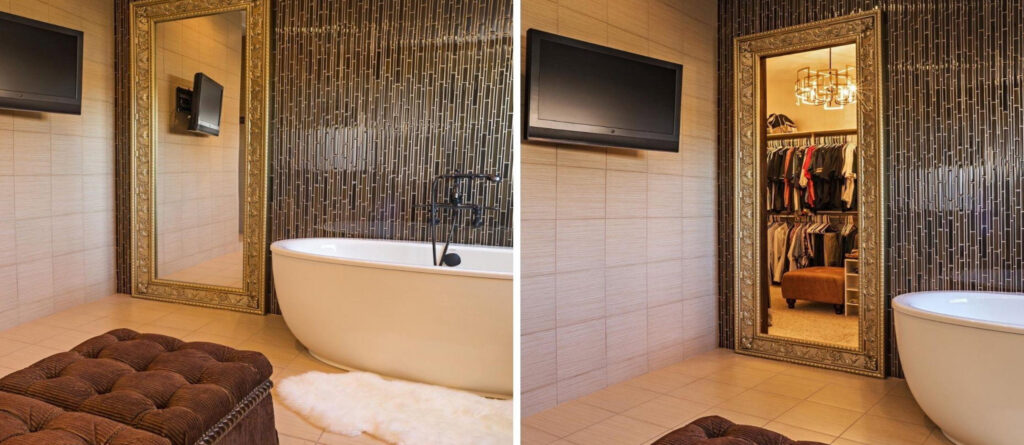
If there is a break-in or home invasion, you don’t want your loved ones to have to traverse hallways and open space if all possible. If putting a Panic Room right off a frequented living space is not possible, then you should then perhaps locate it in a central location. If your home has multiple floors, the Panic Room should go on the floor where your living primary living space is.
What Types Of Materials Are Used For Safe Room Construction?
The main material used in the construction of a residential Safe Room is a high-quality steel that ranges from 1/4 to 1/2 inches in thickness. Of course, thicker steel can be used and construction will be priced accordingly. Other materials utilized in the construction of various Safe Rooms range from Kevlar (bullet resistant material), fiberglass and other composites. Once you have selected a manufacturer, they can provide input as to what materials would best suit your situation. Just make sure they are adhering to FEMA design guidelines.
What Items Should Be kept within a Panic Room?
Another benefit of having a Panic Room is that you can house a safe within a safe. Most burglars and thieves will look in the obvious places for safes such as bedroom closets, underneath beds basements, garages, walls within a living room or den, office drawers, behind large portraits or even hallway panels and mirrors. Having a fortified entry, that looks like as though it is already part of the house is a huge advantage.
The range of valuables that can be kept in Safe and Panic Rooms are nearly unlimited. Everything from jewelry, paper cash, coins, financial documents, passports, firearms and other collectible items to just name a few. The primary downside to keeping valuables in a Safe Room is that it looks like a Safe Room and it could draw unintended attention to a burglar.
Must haves in any Panic Room should be supply of water that will last you at least 24 hours and some type of non-perishable food supply that could last at least 24 hours, a can-opener, first-aid kit and essential medications. A means to get fresh air into the space of perhaps portable oxygen if you are able to acquire it. You should also have at the ready personal defense items such as a firearm, taser, pepper-spray or perhaps all 3 in the event the room were to become compromised.
Other items to have in your Panic Room would consist of internet access or at least or spare smart phone that at least gives you the ability to call 911.  Very high-end Panic Rooms can also be retrofitted with close circuit monitors linked to cameras throughout the home. Even deactivated smartphones with or without a sim card give you the ability to dial 911. This is the perfect opportunity to use an old cell phone to stash away in your safe room.
Very high-end Panic Rooms can also be retrofitted with close circuit monitors linked to cameras throughout the home. Even deactivated smartphones with or without a sim card give you the ability to dial 911. This is the perfect opportunity to use an old cell phone to stash away in your safe room.
What Not To Do When You Have a Panic Room:
Do not discuss the fact that you have a fortified hidden room with people you cannot trust. This is not something you want to broadcast. Yes, it is cool and makes an interesting topic of discussion, but be weary around the company you keep if you decide to make this known.
We are not suggesting that your close friends are thieves and plan to burglarize you, but we ALL know that many friends have loose lips. It only takes one friend to tell someone else who then tells another person and then the next thing you know your whole neighborhood and beyond knows you have a Safe Room and worst case its very location.
Choosing a Safe Room Manufacturer:
You want to make sure that whoever you choose to design your Safe Room adheres to FEMA design certification which would fall under FEMA P-320 and P-361.
- FEMA P-361 is criteria for Safe Rooms for Tornados, Hurricanes. FEMA P-361 goes above and beyond the minimum requirements of ICC 500 and is criteria meant to provide Near Absolute protection in extreme wind events. IC 500 exists to establish the minimum requirements with regard to the design, construction and installation of an extreme wind event.
- FEMA P-320 is criteria for construction drawing and design when it comes to installing a Safe Room in you home.
It is quite understandable if this all sounds a little confusing, so let’s summarize below:
Summary:
If you live in a Tornado belt state and wish to have a more reinforced structure designed to serve as both a storm shelter and double as an emergency fall back in case of home invasion, you should perhaps be looking at a dedicated Safe Room. The placement of an external Safe Room would not be of great use should your home be invaded. Thus most safe rooms will be installed internally within the household structure.
If tornados and hurricanes are not as much of an issue and your primary focus is security for your family in an emergency and secrecy of your fall back location is paramount, then a hidden Panic room should be considered. A manufacturer that specializes in hidden reinforced doors and retrofitting of your Panic Room with additional security measures such as buried phone lines, perhap closed circuit or wireless video surveillance would be an added bonus.
Choose a Safe Room Manufacturer who at the very minimum designs and constructs Safe Rooms that adhere to FEMA P-361 standards. If the manufacturer says they meet ICC 500 guidelines, there are doing the bear minimum and you should perhaps look elsewhere with regard to who constructs your Safe Room.
Here is helpful information with regard to FEMA guidelines for Safe Room construction.
Thinking of a Panic Room? Visit One of the Worlds Best Secret Passageway and Hidden Security door Manufacturers.

